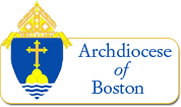From Father Steven - June 22, 2025
Dear Brothers and Sisters,
This week we celebrate the Solemnity of the Most Holy Body and Blood of Christ, commonly known as Corpus Christi. This feast is a longstanding tradition of the Church, which began in the 13th century in Italy following the Eucharistic Miracle of Orvieto. On this special occasion, I would like to reflect on the Real Presence of Christ in the consecrated host.
Fr. Peter of Prague, a German priest, was on a pilgrimage to Rome. While celebrating Mass in a small chapel in Bolsena, he began to doubt whether Christ was truly present in the consecrated Bread. As he pronounced the words of consecration—“Take this, all of you, and eat of it, for this is my Body, which will be given up for you”—the host began to bleed. Unsure of what to do and aware that Pope Urban IV was nearby in Orvieto, Fr. Peter brought the matter to his attention. The Pope listened to the priest’s account, granted him absolution, and sent emissaries to investigate. Once the facts were confirmed, the Pope ordered the Bishop of the diocese to bring the consecrated Host and the linen cloth, now stained with blood, to Orvieto. In a solemn procession attended by archbishops, cardinals, and other Church dignitaries, the Pope received the relics and placed them in the cathedral. The linen corporal, still bearing the bloodstains, is reverently enshrined and exhibited in the Cathedral of Orvieto to this day. Interestingly, Pope Urban IV had been involved in the Eucharistic Revival in Liège, Belgium, twenty years earlier—where the first celebration of Corpus Christi was ever observed. One year after the miracle of Bolsena, the Pope commissioned St. Thomas Aquinas to compose special prayers and a Mass for the feast and instituted the Solemnity of Corpus Christi for the entire Church. Inside our church over the next few weeks, we are displaying information—in all three languages—about other Eucharistic miracles from around the world. These accounts can deepen our faith and help us to better appreciate the mystery of the Eucharist.
“A Christian is not obliged to believe in Eucharistic miracles,” As Monsignor Raffaello Martinelli explains. “However, Eucharistic miracles can encourage us to understand, appreciate, and love the Eucharist… They can help a person discover the mystery, the beauty, and the richness of the Eucharist. We must never forget nor fail to mention that the Eucharist is the true, great, inexhaustible daily miracle. It is indeed true that the most important and astounding miracle is the one that takes place whenever the Eucharist is celebrated, during which Jesus Christ is present in the Eucharist in a unique and incomparable way. He is present in a true, real, and substantial way—with His Body and Blood, with His Soul and Divinity. In the Eucharist, therefore, Christ is present sacramentally, under the appearances of bread and wine, whole and entire: God and Man (Compendium of the Catechism of the Catholic Church, n. 282). In making His Sacrifice on the Cross present and actual, He becomes our food and drink—uniting us with Himself and with one another, and becoming our viaticum on our earthly pilgrimage toward our eternal homeland.”
As we celebrate Mass this weekend, I invite you to reflect on the importance of what happens at Mass—and on the Mass itself. If what we believe is indeed true, then we are called to approach the Eucharist with deeper reverence and preparation. Let us consider arriving a bit earlier, taking time to meditate and prepare spiritually, dressing appropriately, and maintaining a posture of reverence during the liturgy. One essential way to prepare is through the Sacrament of Confession. As the Catechism of the Catholic Church §1385 teaches, anyone who is aware of having committed a mortal sin must receive sacramental absolution in Confession before receiving Holy Communion, because receiving the Eucharist in a state of mortal sin is a sacrilege. May this celebration be a true Eucharistic Revival—for our parish and for each of us personally.
God Bless,
Fr. Steven

